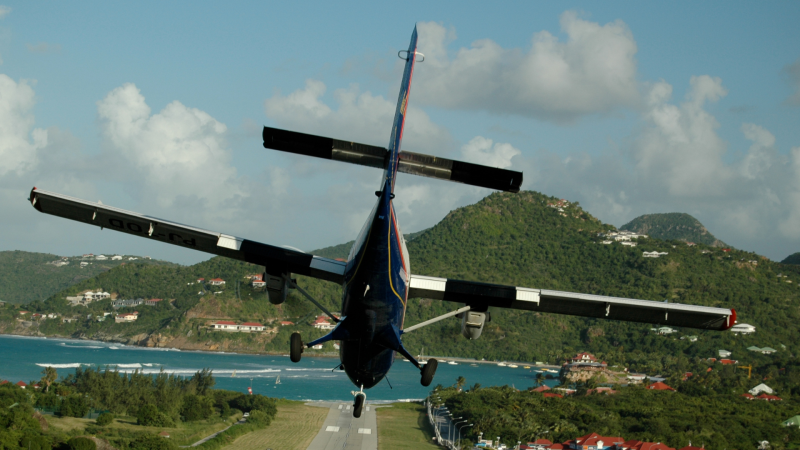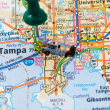Small plane emergency landings are a rare but potentially life-saving maneuver that pilots must execute at a moment’s notice. The skill and quick thinking of a pilot can be the difference between a successful emergency landing and a tragic outcome.
A young pilot in California made headlines in early 2023 when he safely landed a small plane on an old stretch of Route 66 after experiencing engine failure. This emergency landing is just one example of the different situations that can arise. It also showcases the landing techniques that pilots must know.
Throughout history, there have been numerous emergency landings that have captivated the public. We’ll take a closer look at the young pilot’s emergency landing on Route 66.

Who Made the Emergency Landing on Route 66?
Eighteen-year-old Brock Peters made the emergency landing on old Route 66. He received his pilot’s license in September of 2022 and had trained for what to do in case of engine failure situations.
It should’ve been a standard trip with relatives. But it turned into a heart-racing event that had him kicking into emergency mode.
What Were the Events Leading Up to the Emergency Landing?
Peters was flying his grandmother and cousins to breakfast in Riverside, Calif. Everything was normal until he heard a boom from the engine, which then cut out.
Trained in what to do, Peters went through his emergency checklist, but the engine wouldn’t restart. He was given just a few minutes to determine the best course of action. He had no choice but to attempt to land the plane on an old stretch of Route 66, a two-lane road that was open to traffic.
As he descended, a car coming toward the airplane pulled over to the side of the road. Another car was moving in the same direction as Peters, but he knew he had enough space to land in front of it, and he did.
After the wheels touched down on Cajon Boulevard, Peters pulled the plane over to the side of the road and called 911.
Were There Any Injuries?
Thanks to Peters’ training and quick thinking, there were no injuries. He safely avoided cars on the road and managed to put the plane down without incident.
He said his passengers were a bit shocked by the incident, but no one was injured. There was also no damage to the airplane.
HOT TIP
Avoid making any of these Biggest Mistakes People Make When Booking Flights During the Holidays.

What Can Cause an Emergency Landing?
Many situations can cause an emergency landing of a small fixed-wing aircraft. Equipment malfunction or failure, inclement weather, pilot error, and in-flight fire are just a few of the causes.
Engine Failure After Takeoff
Engine failure is one of the most critical emergencies that can occur during a flight. If an engine fails after takeoff, the pilot must take immediate action to bring the aircraft to a safe landing.
They will first attempt to restart the engine, but if this isn’t possible, they will divert to the nearest suitable airport or other safest location and prepare for an emergency landing. The pilot will also communicate with air traffic control and any onboard passengers.
In-Flight Fire
A fire on board an aircraft can be a terrifying experience for everyone involved. If a fire starts in flight, the pilot will immediately follow their emergency procedures to contain the fire and prepare for an emergency landing. This may include activating the fire suppression systems and diverting to the nearest suitable airport.
Flight Control Malfunction
Flight control malfunctions can occur for various reasons, such as equipment failure or damage to the aircraft. If there’s flight control malfunction, the pilot must quickly assess the situation and take action to regain control of the aircraft.
Depending on the severity of the malfunction, the pilot may attempt to repair the problem or divert to the nearest suitable airport for an emergency landing.
Systems Malfunction
Like flight control malfunctions, systems malfunctions can also occur for various reasons, such as equipment failure or damage to the aircraft. These malfunctions can affect a range of systems, such as navigation, communication, or electrical systems.
If there’s a systems malfunction, the pilot must quickly determine the gravity of the malfunction and attempt to regain control of the aircraft. After assessing the severity of the malfunction, the pilot may attempt a repair or prepare for an emergency landing at the nearest suitable airport.
What Types of Emergency Landings Are There?
There are three main types of emergency landings for small fixed-winged aircraft. These are precautionary landing, forced landing, and ditching. Each has specific tactics and techniques to help facilitate the best landing in worst-case scenarios.
Forced Landing
A forced landing is an emergency landing made without the aircraft’s normal power and/or control capabilities.
This type of emergency landing occurs when the pilot is unable to maintain control of the plane due to an engine failure or other mechanical problem and must land the aircraft immediately.
Precautionary Landing
A precautionary landing is an emergency landing made as a precautionary measure before a more serious problem arises. This type of emergency landing may occur due to a warning light or indicator. It would indicate a problem with the aircraft or a system malfunction.
During a precautionary landing, the pilot may still have control of the aircraft and be able to fly it safely to the landing location.
Ditching
Ditching is the process of intentionally landing an aircraft in water. This type of emergency landing is typically only used as a last resort. That includes when the plane is out of range of a suitable landing location, and the engine is failing.

What Are Some Famous U.S. Emergency Landings?
There is probably no more famous U.S. emergency aircraft landing than “The Miracle on the Hudson.” In fact, there was an award-winning movie featuring Tom Hanks that depicted the incident and the captain’s heroism.
There are several other famous incidents that were just as harrowing and pilots as deserving of recognition. Here are some incidents that could have ended much worse than they did.
US Airways Flight 1549 Lands on the Hudson River
On January 15, 2009, US Airways Flight 1549, an Airbus A320, took off from LaGuardia Airport in New York City, bound for Charlotte, N.C. Shortly after takeoff, the plane struck a flock of geese, which caused both engines to fail.
The pilot, Captain Chesley “Sully” Sullenberger, decided to ditch the aircraft in the Hudson River. All 155 passengers and crew on board were successfully evacuated, and all survived the incident. That’s how it got the name “Miracle on the Hudson.”
United Flight 1175 Lands After Engine Casing Broke
On February 13, 2018, United Airlines Flight 1175, a Boeing 777, took off from San Francisco International Airport, bound for Honolulu, Hawaii. During the flight, the plane’s right engine casing broke apart, causing debris to strike the plane’s wing and fuselage.
The flight crew, including Captain Christopher Borzu Behnam, declared an emergency, but safely guided the plane and landed in Hawaii. There were no injuries.
Southwest Airlines Flight 1380 Lands After In-Flight Casualty
On April 17, 2018, Southwest Airlines Flight 1380, a Boeing 737, took off from New York’s LaGuardia Airport bound for Dallas, Texas. During the flight, an engine fan blade broke off, causing debris to strike and shatter a window, causing depressurization and the death of a passenger.
The captain, Tammie Jo Shults, managed to guide the plane to a landing in Philadelphia with no further injuries to any other passengers.
TACA Flight 145 Lands on New Orleans Levees
On August 22, 2002, TACA Flight 145, a Boeing 737, took off from San Salvador, El Salvador, bound for New Orleans, La., via Belize City, Belize. During the flight, the plane experienced a complete loss of electrical power, which caused all instruments and systems to fail.
The pilot, Captain Carlos Dardano, somehow navigated horrendous weather conditions in the Gulf of Mexico to safely land the plane on a long strip of grass next to a levee in New Orleans, which was not designed as an emergency landing strip. All passengers and crew on board survived the incident without major injuries.
Will the Young Pilot Ever Fly Again?
Though there is a long history of terrifying emergency landings in the airline industry, Peters doesn’t intend to let his white-knuckle experience landing on Route 66 deter him. In fact, it only seemed to bolster the young pilot’s confidence.
“I’m going to keep flying. This is my passion,” he told the Los Angeles Times. “This gives me a little more confidence in those kinds of situations like I’ve done it before.”
Brock said his goal was to become a commercial airline pilot. Here’s to hoping we don’t have to read about him in another daring emergency landing situation. But if such a situation occurs, it sounds as if he might be just the pilot we’d want at the controls.
If You Love RVing, You Need to Stay Informed
Don’t rely on biased RV industry news sources to keep you informed with RVing news.
Stick with Nomadic News. We publish daily articles and breaking stories that matter to your RV lifestyle.










